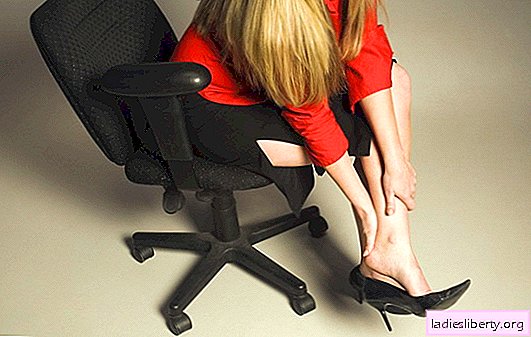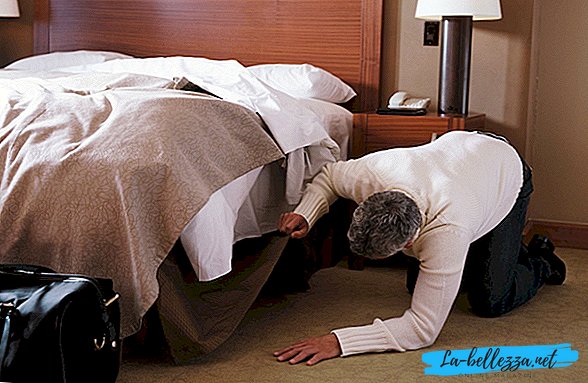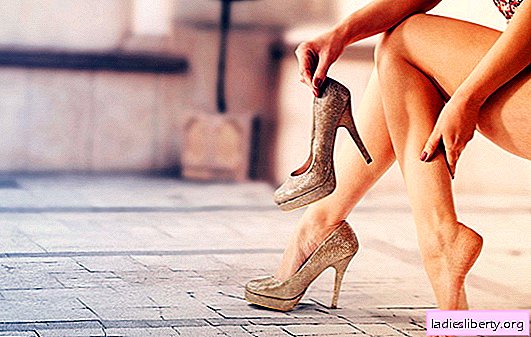
The human heel acts as a natural shock absorber.
Its soft muscle layer can withstand enormous loads when running, walking or jumping.
Due to the fact that many nerves pass through the heel, it is often exposed to injuries and illnesses.
Let's consider in more detail why the heel can hurt when walking and how to cope with it.
It hurts to step on the heel: reasons
Sometimes heel pain can occur without the development of any disease. Most often, it is provoked by such reasons:
• quick weight gain, which is why heels are subjected to excessive load;
• thinning of the subcutaneous layer of the heel with a sharp increase in motor activity;
• wearing uncomfortable shoes with excessively high heels (from 5 cm), due to which the load on the leg is distributed unevenly;
• daily walking over long distances;
• a long stay on your feet (for the appearance of pain in the heels it is enough to stand uninterruptedly in one place for two to three hours).
Heel pain is a serious signal that may indicate the development of such diseases:
1. Ankylosing spondylitis is a chronic disease of the joints in which they lose their mobility and elasticity. Quite often, the first manifestations of this pathology are aching pain in one or both heels.
2. Rheumatoid arthritis is one of the most complex diseases of the joints, which occurs with many complications. The main manifestations of this type of arthritis are heel pain, its edema and impaired motor function. Patients also feel weakness, body aches and loss of appetite.
3. It can hurt to step on the heel with the development of gout - a joint disease that develops as a result of salt deposition. It is characterized by acute pain, swelling, and slight redness of the affected joint or heel. In addition, gout is characterized by paroxysmal course, as well as exacerbation of pain at night.
4. Severe infectious diseases (chlamydia, dysentery, gonorrhea, and others) can trigger bone arthritis. In this case, the person will be painfully stepping on the heel.
5. Tuberculosis of the calcaneus can cause intolerable pain in the heel, which will develop not only under exertion, but also at rest.
This disease begins with bone destruction and skin necrosis. Gradually, it captures all large sections of the foot.
If you do not treat such tuberculosis, then it will lead to the formation of a purulent fistula and a wound that will go outside (out of the leg).
6. Calcaneus osteomyelitis is a serious disease in which inflammation and suppuration develop rather quickly. It captures soft and bone tissue. At the very beginning of the development of osteomyelitis, a person suffers from weakness, fever and acute muscle pain. In this case, the pain is bursting. They intensify with the slightest pressure on the calcaneus. In addition, sometimes the patient may have swelling of the legs and expansion of the veins.
7. Acute fasciitis is a disease that occurs with a heavy load on one or both legs. Its main symptom is heel pain, which intensifies after walking long distances.
8. Bursitis is a disease accompanied by a strong inflammatory process in the back of the heel. In this case, edema, redness and pain on palpation occur on it. Gradually, the swelling increases, so it’s more difficult for a person to step on his foot. This condition requires immediate treatment, otherwise the patient may become disabled.
9. Osteochondropathy is characterized by the necrosis of several areas of the cancellous bone, which is subjected to a large load. Patients with this diagnosis are advised to walk with a cane or crutches.
10. Tendonitis is a disease in which the heel tendons become very inflamed. Typically, this condition develops due to excessive strain on the tendon.
11. With tendonitis, the pain will be localized along the tendon (near the heel). The development of oncological pathologies is one of the most dangerous conditions. Early signs of such a disease are aching heel pain, its swelling and a slight increase in temperature. It is also possible a violation of mobility in the joint.
In addition, the person will be weak, passive and exhausted.
12. Nerve neuropathy can provoke acute pain in the heel and foot. Sometimes there is a decrease in the sensitivity of the skin of the foot. If you do not treat such a disease, then it will lead to deformation of the foot.
In addition to the main diseases, previously suffered bruises and damage to the integrity of the calcaneus can also cause pain. These include:
1. Tension of the tendons or their complete rupture. Usually this results in a direct blunt bump or improper muscle contraction, which led to stretching.
This condition is accompanied by acute pain and swelling. It is difficult for a person to step on the foot, however, mobility in the joint is partially preserved.
2. Injury of the calcaneus. Usually it occurs after an unsuccessful landing (when jumping from a height). A bruise is characterized by pain "as if a sharp nail was thrust into the heel." Usually this condition does not require additional drug treatment and after 1-2 weeks it goes away by itself.
3. Fracture of the calcaneus is accompanied by swelling and pain in the heel. Bruising on the plantar of the foot is sometimes possible. At the same time, active movements of the lower leg are impossible.
Heel hurts: diagnosis
If you experience discomfort or pain in the heel, consult a traumatologist. After the examination, the doctor will prescribe such examinations:
1. General blood test (will help diagnose arthritis, ankylosing spondylitis and will give a general picture of the state of the body and the presence of an inflammatory process in it).
2. Biochemical advanced blood test (will show the level of uric acid, which can increase with acute gout).
3. X-ray of the calcaneus (will show the general condition of the heel and its bone tissue).
4. Ultrasound of the heel (helps to see the pathology associated with muscle tissue of the heel).
5. Bacterial examination for infections.
6. Bone puncture (with suspected tuberculosis or osteomyelitis).
7. MRI of the heel.
8. CT heel.
Further treatment will depend on the disease detected, the age and general condition of the patient.
Heel hurts: treatment
Treatment is selected for each patient individually. Classical therapy against heel pain involves this:
1. Performing therapeutic exercises and foot massage. They need to be done daily.
2. Applying ice to the sore heel for 10-15 minutes a day.
3. Taking anti-inflammatory drugs.
4. Taking painkillers and antipyretic drugs (at high temperature).
5. Daily rewinding of a sore foot and heel with an elastic bandage.
6. The use of special thrust bearings. They can be purchased at any pharmacy. These devices will reduce the load on the heels. Also, with flat feet, it is recommended to wear orthopedic insoles (it is desirable to choose their shape and size together with the orthopedist).
7. Replace high-heeled shoes with orthopedic shoes with flat soles. It is also desirable that she support the heel and the entire foot as much as possible, preventing her from accidentally dislocating.
8. The use of local decongestant ointments and gels (Fastum gel, Diclac gel, etc.).
9. Restriction of physical activity (in more severe cases, the patient is shown bed rest).
10. Reception of chondroprotectors and calcium.
Also, if the disease was severely neglected, then the patient can undergo surgical treatment.
Heel hurts when walking: prevention
In order to prevent the development of heel diseases, one should adhere to such lights:
1. Monitor your weight and with its sharp increase take the necessary measures (engage in spot, follow a prescribed diet).
2. Make relaxing foot baths with herbs.
3. After heavy loads on the legs, it is recommended to do self-massage of the feet, as well as raise the legs above the levels of the heart, in order to prevent the development of edema.
4. Timely pay attention to heel pain. When the first unpleasant symptoms appear, it is better to undergo a diagnosis immediately than to launch the disease to an extreme degree.
5. In time to treat those diseases that can provoke heel pain (as a complication).
6. Do not overstrain the feet when playing sports.











